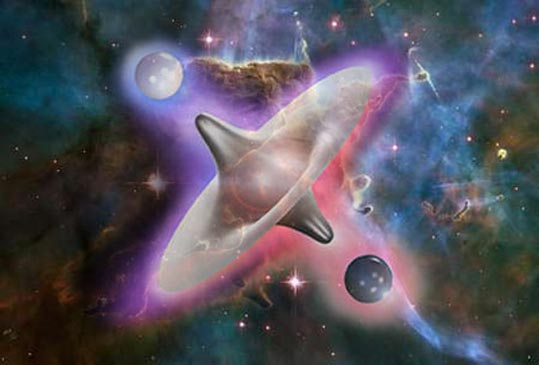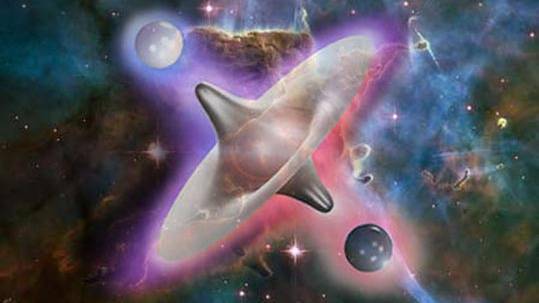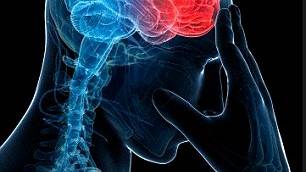Scientists discover explanation for why the Universe exists
Source: ca.news.yahoo.com

Physicists have long wondered why the universe exists when matter and anti-matter particles obliterate each other on contact.
But new data from a particle accelerator in the United States suggests a reason.
The tests showed that when anti-protons and protons collide, the resulting new particles show a one per cent skew toward matter over anti-matter. Over a long period of time, this characteristic of the universe could explain why matter has come to dominate over anti-matter.
"Many of us felt goose bumps when we saw the result," said Stefan Soldner-Rembold, a physicist at the University of Manchester in the United Kingdom.
"We knew we were seeing something beyond what we have seen before and beyond what current theories can explain."
Every basic particle of matter has a matching anti-particle. The anti-particle has the same mass as the standard particle, but an opposite electric charge. Anti-matter is not to be confused with dark matter.
While anti-matter has been demonstrated in numerous experiments, dark matter remains a hypothesis used to help explain the effects of mass which scientists cannot currently see.
The dark matter hypothesis helps to explain why the universe hasn’t expanded into a cold and relatively motionless void. The extra mass, and resulting gravity, is the reason galaxies form into clumps rather than flying apart.
Particle accelerators, such as the Tevatron collider at the Fermi National Accelerator Laboratory in Illinois, which conducted the tests, and the Large Hadron Collider at CERN on the Swiss-French border, use electric fields to smash particles into each other at incredibly high speeds.
Scientists then study the particles that are created. Researchers seek larger and larger accelerators in order to create collisions that more closely resemble those which took place soon after the Big Bang 13.7 billion years ago, when the temperature and density of the universe were much higher.
The new findings deviate from what is known as the Standard Model, the theory created in the 1970s to explain the complex interaction of sub-atomic particles.
Up until now, the model predicted a small preference toward matter over anti-matter, but not enough to explain the structure of the universe we see today.
The findings come ahead of an experiment to be held at CERN, called LHCb, also aimed at explaining matter’s dominance.
Consequently, the results of the test in the U.S. could soon be confirmed and expanded, forming the basis for a new or amended quantum theory.
Article from: ca.news.yahoo.com
Also tune into:
Wallace Thornhill - The Electric Universe
Wallace Thornhill - Proto-Saturn, The Purple Dawn of Creation & Our Strange Solar System
Donald E. Scott - The Electric Sky
Rens van der Sluijs - Plasma Mythology & The Axis Mundi
Holger Bech Nielsen - CERN & the Large Hadron Collider ’Being Sabotaged from the Future’
William Henry - The Apotheosis is at Hand, NWO, COP15, Norway Blue Spiral & Stargates






















